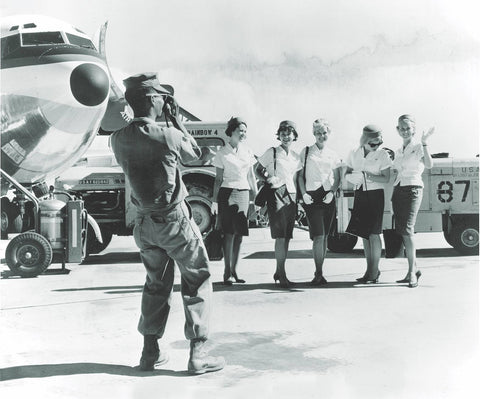
Book Review: ‘The Great Stewardess Rebellion’
Girdle checks. Public weigh-ins. Automatic termination at age 32. Such were the conditions experienced by many female flight attendants in the not-so- friendly skies of the 1960s and 1970s, as journalist Nell McShane Wulfhart makes clear in this compelling account.
Far from living the chic image of international jet-setters, American flight attendants — numbering more than 20,000 by 1967 — worked punishing schedules, earned wages often lower than those of cleaning crews, were portrayed as sex objects rather than crucial safety professionals, and lost their jobs if they gained weight, became pregnant or married.
Recommended for you
Wulfhart illustrates her points with some contemporary advertisements in the book, including Braniff International’s 1965 “Air Strip” campaign, which had flight attendants remove articles of clothing throughout each flight. Thwarted in their efforts for more just treatment from their union and airline management, flight attendants enlisted prominent feminists such as Gloria Steinem and Betty Friedan for support, undertook efforts at organization and publicity and turned to the fledgling Equal Employment Opportunity Commission for legal action under Title VII of 1964’s Civil Rights Act, although the EEOC tended to prioritize race rather than sex discrimination. Legal cases — including those of men, who had been mostly shut out of the flight attendant profession — resonated beyond the airline industry and established important precedents for equity in the workplace.
Wulfhart follows a few key players in this fight. Among them are feisty flight attendant Patt Gibbs, who later became a pilot and union president; diplomatic flight attendant Tommie Hutto-Blake, who also served as a union president; flight attendant Brian Hagerty, who faced homophobia; and flight attendant Cheryl Stewart, who encountered strange questions such as “How does it feel to be colored?” Their inspiring tales of grit and guts illuminate a dark space in aviation.
